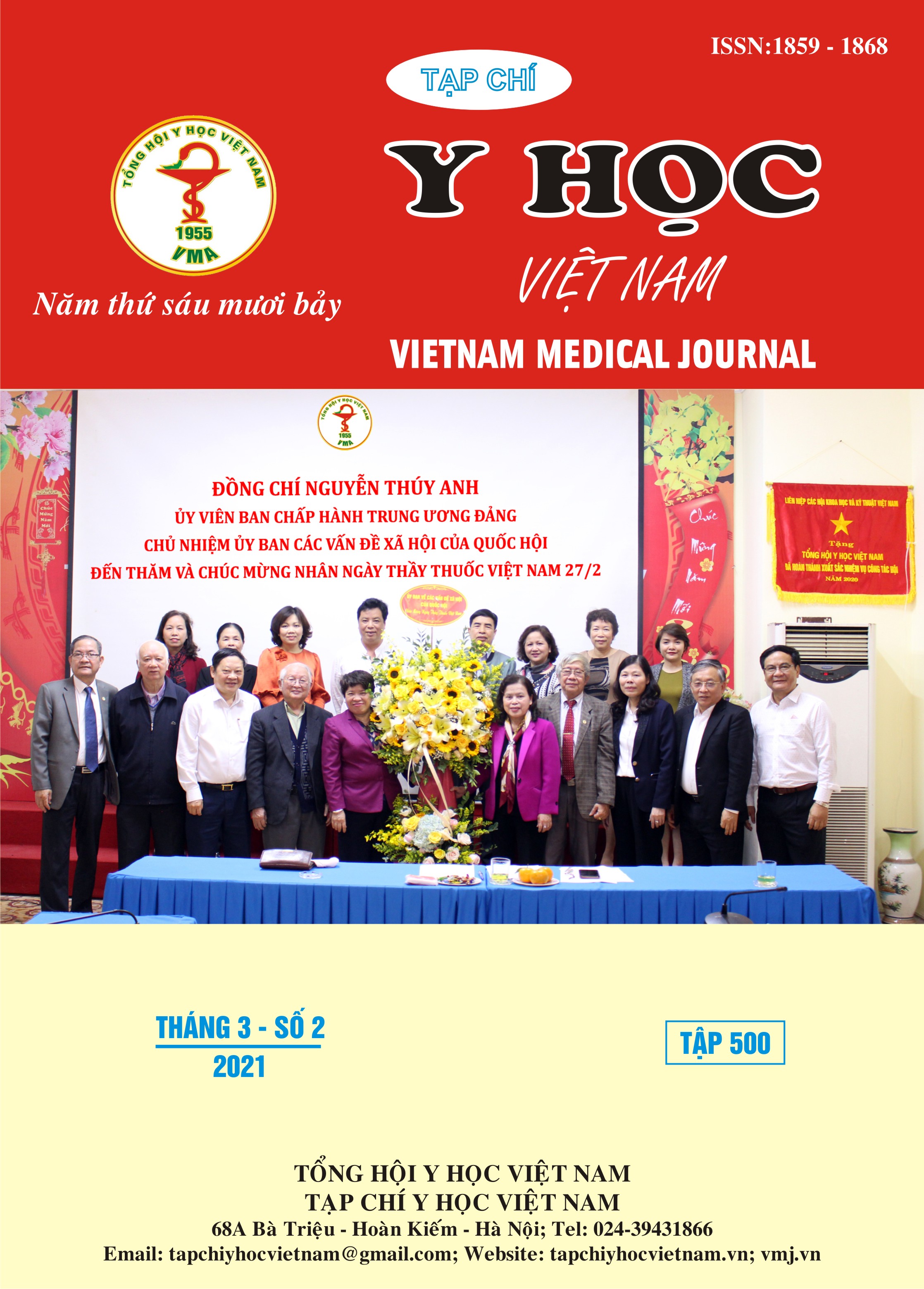PREOPERATIVE HEART RATE VARIABILITY PREDICTS ATRIAL FIBRILLATION AFTER CORONARY ARTERY BYPASS GRAFTING
Main Article Content
Abstract
Introduction and objectives: The autonomic nervous system may play an important role as a trigger and risk marker for developing arrhythmia. The incidence of new-onset atrial fibrillation postoperative coronary artery bypass surgery was 5-40%. The relationship between preoperative heart rate variability and atrial fibrillation after coronary artery bypass surgery has been investigated with divergent results. The purpose of the study was to investigate the association between preoperative heart rate variability and atrial fibrillation after coronary artery bypass graft surgery. Methods: The study involved 119 consecutive patients with coronary artery disease were assessed with 24-hour Holter recordings 2 days before coronary artery bypass grafting and 1 week, 3 months, 6 months after coronary artery bypass grafting at Hanoi Heart Hospital from 6/2016 to 8/2018. Main results: The rate of new on-set atrial fibrillation post coronary artery bypass graft surgery 7 days was 13.7%, 13.8% after 3 months and 17.2% after 6 months. Low heart rate variability before surgery accounted for 28.6%, 51.8% after 7 days, 19.6% after 3 months and 12.7% after 6 months. Decreased heart rate variability before surgery had the risk of developing new-onset atrial fibrillation after surgery 3-4 times. In which, the reduction of SDNN index had the highest value related to atrial fibrillation after surgery. Conclusions: The rate of new onset atrial fibrillation after coronary artery bypass graft surgery from 13.7% to 17.2% followed up to 6 months. Decreased heart rate variability was pedict a risk factor for new atrial fibrillation after coronary artery bypass graft surgery.
Article Details
Keywords
heart rate variability, atrial fibrillation, coronary artery bypass graft surgery
References
2. Electrophysiology Developed in Collaboration with the North American Society for Pacing And (1999), "ACC/AHA Guidelines for Ambulatory Electrocardiography ", J Am Coll Cardiol, Vol. 34(No. 3): pp. 912-948.
3. Tatsuishi W., Adachi H., Murata M. et al (2015), "Postoperative hyperglycemia and atrial fibrillation after coronary artery bypass graft surgery", Circ J, 79(1): pp. 112-8.
4. Kertai M. D., Li Y. J., Ji Y. et al (2015), "Genome-wide association study of new-onset atrial fibrillation after coronary artery bypass grafting surgery", Am Heart J, 170 (3): pp. 580-90 e28.
5. Takeshi Kinoshita, Tohru Asai, Takako Ishigaki et al (2011), "Preoperative Heart Rate Variability Predicts AtrialFibrillation After Coronary Bypass Grafting", Ann Thorac Surg, 91: pp. 1176–82.
6. Lombardi F., Colombo A., Basilico B. et al (2001), "Heart rate variability and early recurrence of atrial fibrillation after electrical cardioversion", J Am Coll Cardiol, 37(1): pp. 157-62.
7. Ashes C. M., Yu M., Meineri M. et al (2014), "Diastolic dysfunction, cardiopulmonary bypass, and atrial fibrillation after coronary artery bypass graft surgery", Br J Anaesth, 113(5): pp. 815-21.
8. Schulman S., Cybulsky I. and Delaney J. (2015), "Anticoagulation for stroke prevention in new atrial fibrillation after coronary artery bypass graft surgery", Thromb Res, 135(5): pp. 841-5.


